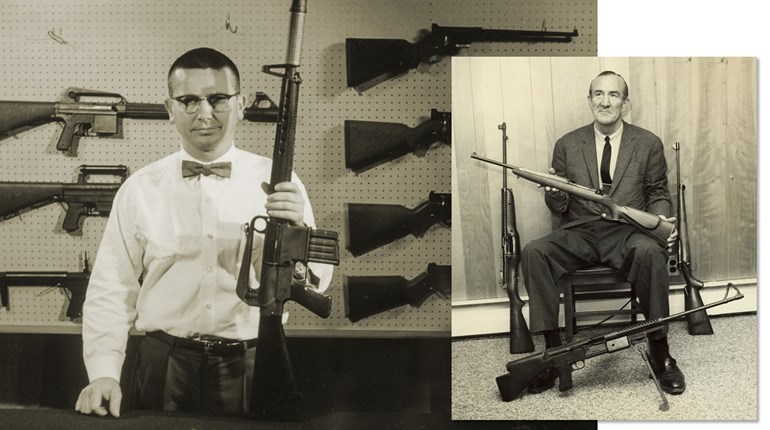
 Since this is my 223rd blog, I thought I’d say something regarding the .223 Remington, a.k.a. 5.56 NATO cartridge. Because of the so-called “Assault Weapon” ban of the 1990s there has been a lot of froth put forth about what is and isn’t a sporting rifle. As for me, I make no apologies for owning some AR-style rifles—some I use for sporting purposes; others are here for self-defense. But there are those who want to infuse the AR platform—as well as other semi-auto rifles—into the hunting world.
Since this is my 223rd blog, I thought I’d say something regarding the .223 Remington, a.k.a. 5.56 NATO cartridge. Because of the so-called “Assault Weapon” ban of the 1990s there has been a lot of froth put forth about what is and isn’t a sporting rifle. As for me, I make no apologies for owning some AR-style rifles—some I use for sporting purposes; others are here for self-defense. But there are those who want to infuse the AR platform—as well as other semi-auto rifles—into the hunting world.
In the interest of full disclosure, I’ll state up front that I am a more traditional soul. My tastes run more toward blue steel and walnut. However, I am also acutely aware that many shooters and hunters prefer to use the latest in technology. They get a charge out of using cutting-edge technology in the field. As long as what they are doing does not adversely impact the resource—i.e. decimate the game herd or leave a lot of wounded animals to die slow, painful deaths—who am I, or anyone else, to say they are wrong?
Finally, we also need to accept the fact that lever- and bolt-action rifles—even single shots—were once primary rifles of the military. I’m sure that there were some old geezers around after World War I who thought these young whippersnappers coming back and hunting deer with bolt-action repeaters were unfair. We, nonetheless, must march onward.
The question of the day: Is the .223 Remington/5.56 NATO cartridge an adequate deer cartridge? I had some pre-conceived notions regarding this but no first-hand experience, so I checked with someone who did. Richard Mann is a gun writer out of West Virginia, and he has shot somewhere around a dozen whitetails with a .223 and seen a similar number shot by others. “Given a good bullet like a 63-grain Nosler Partition or Barnes TSX, the .223 is a fine deer cartridge.” I pressed him regarding the range these deer he has taken or seen taken were shot. All were less than 200 yards. Richard does a lot of research using ballistic gelatin and claims the wound cavities from a .223 with a strong bullet are better than a typical 150-grain .30-30 bullet.
“It’s because of the velocity difference,” he said. “A .30-30 bullet is going to hit a deer at 2,200 fps or less. In the .223 the bullet can be as much as 900 fps faster, depending on the range. The wound cavities I have seen in ballistic gelatin are much bigger than those from a .30-30.”
He said that when the .223 bullet gets down to 2,400 fps or less, however, that it will lose much of its authority.
That velocity threshold occurs at some point just this side of 200 yards. Since the vast majority of his whitetail hunting occurs in the east where he says a long shot is 150 yards, it would seem from that perspective that the .223 Remington is an adequate deer cartridge. Too, the deer in the east—while a buck can occasionally weigh 200 pounds—tend to be much smaller. Out here in the west where I live, the deer average a bit heavier—perhaps 150 pounds would be a reasonable average, and there are plenty of bucks weighing more than 200 pounds. Ranges tend to be longer as well, especially on the wide-open plains and in the Rocky Mountains. We also have to contend with more wind, and wind affects lighter bullets far more substantially than heavier .27- to .33-caliber bullets.
I think the best answer to the question as to whether the .223 Remington is an adequate deer cartridge is this: It depends. How big are the deer you are hunting; at what range must you be able to score a lethal hit; and what bullet you choose all have an impact on determining whether the .223 Remington—or any other chambering—is sufficient as a deer cartridge.
It is near impossible to give a definite and perfect answer to such questions. As soon as one declares a cartridge being the last word on a particular game animal—in this case deer—someone will pop up with testimonial evidence where he or his buddy shot an 80-pound whitetail doe in the heart with a .375 H&H Magnum and the deer ran 200 yards. All we can do is come up with tendencies.



































